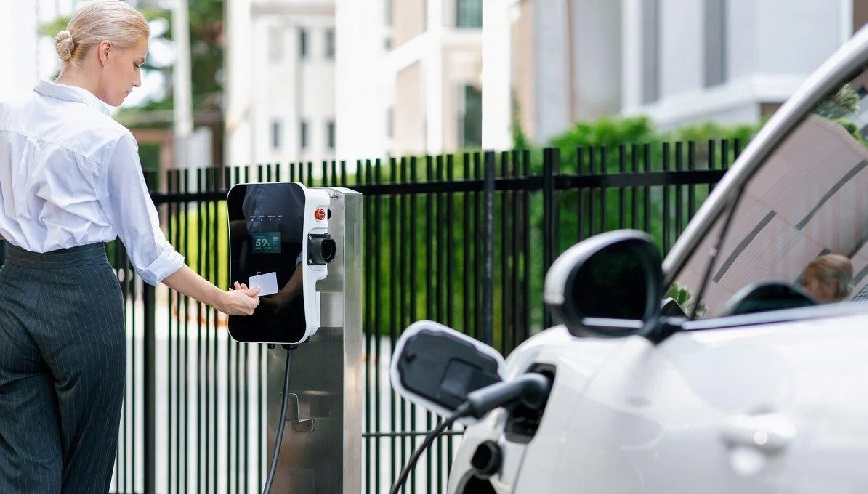The electrification of transport is positioned as a cornerstone of the European climate agenda, and the success of this endeavour depends on various stakeholders.
In this context, will the responsibility primarily fall on the public or the private sector?

For Till Eichler, Policy Officer Brussels at Transport & Environment (T&E), the answer is clear: the majority of investments must originate from the private domain.
According to data from this organisation, of the 310 billion euros required annually by 2030 to decarbonise transport, 85% will need to come from private sources, leaving approximately 39 billion euros for public support.
Here, smart regulation is critical to mobilising the funds.
The T&E representative tells Mobility Portal Europe that setting clear milestones, such as the 2030 climate targets and CO2 emission standards, provide private investors with the certainty needed to adapt their business model and commit capital over the long term.
However, entities such as CONFEBUS, representing the bus transport sector in Spain, emphasise the need for stronger state support, particularly in strategic and socially vulnerable sectors.
The distribution of financing: Where does public money fit?
Eichler underscores that the role of government funding is not marginal but strategic.
“Public financing should target public investments and areas where the availability of private capital is currently low, such as electrical or railway infrastructure,” he indicates.
He also highlights initiatives such as France’s social leasing scheme, which demonstrates how public support can democratise the transition.
This enables low-income families to access electric vehicles by paying affordable monthly instalments, while the state covers the initial costs.
Though yet to be replicated in other countries, Eichler considers it a promising approach of balancing social and climate considerations.
“The transition is not only about technology but about ensuring that no one is left behind,” he remarks.

Jaime Rodríguez, Director of CONFEBUS, concurs, emphasising:
“The bus sector is strategic in achieving these goals, but a collaborative framework between governments and businesses is essential.”
For him, the transition is not optional but a “legal obligation” underpinned by European directives, such as the requirement for 90% of urban buses to be zero-emission by 2030.
Nevertheless, the financial burden of meeting these targets falls primarily on transport operators.
According to Rodríguez, the high cost of zero-emission vehicles, combined with the need for specialised infrastructure such as charging points and workshops, makes state support indispensable.
“In Spain, the pandemic hindered our decarbonisation efforts, but now we must regain lost ground,” he explains to Mobility Portal Europe.
He highlights the Next Generation EU funds as a critical opportunity, warning that they must be strategically managed to finance all the necessary operations for fleet deployment.
“We need a sustainable programme that ensures access to efficient and zero-emission vehicles,” the director states.
In this context, adapting workshops and training personnel is essential.
“An eBus doesn’t require a mechanic; it needs an electrician,” he comments, stressing the need to restructure the entire public transport ecosystem.
Success stories and obstacles in the transition
While France leads with its social leasing scheme, other countries such as Germany adopted auction-based models to fund innovative eMobility projects.
These initiatives ensure that public funds support the most efficient and technologically advanced proposals, promoting rational use of the budget.
Nonetheless, obstacles persist.
One of the main challenges is the lack of harmonisation in incentives and regulations across EU member states.
This imbalance not only complicates planning for multinational companies but also creates disparities in adopting clean technologies.
For instance, fossil fuel subsidies, still amounting to over 40 billion euros annually in Europe, act as a brake on the transition, according to Eichler.
“It is urgent to redirect these resources towards clean fleets,” he asserts.
Rodríguez, for his part, emphasises the importance of reducing economic barriers for small and medium-sized transport enterprises.
“We cannot demand electrification without providing the necessary tools to comply with these regulations,” he maintains.
The role of innovation and the private sector
The private sector underwent a significant shift in recent years, transitioning from resistance to commitment to the climate agenda.
This change was largely driven by the European regulatory framework.
“Today, most businesses no longer view climate protection as an obstacle but as an opportunity to combine economic benefits with sustainability,” says the T&E representative.
Collaboration between the public and private sectors is important to ensuring the success of the eMobility transition.
While private financing may dominate, state support remains vital to bridging gaps where the market cannot act alone.
Rodríguez summarises this necessity by stating: “Government support is fundamental to overcoming technological change and achieving decarbonisation goals.”








